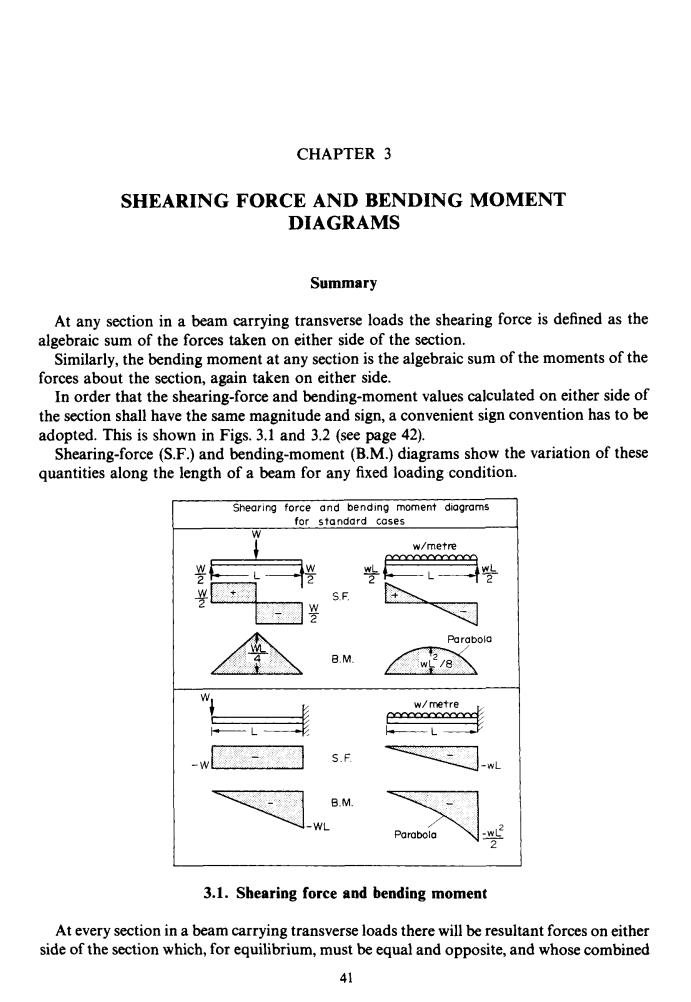正在加载图片...

CHAPTER 3 SHEARING FORCE AND BENDING MOMENT DIAGRAMS Summary At any section in a beam carrying transverse loads the shearing force is defined as the algebraic sum of the forces taken on either side of the section. Similarly,the bending moment at any section is the algebraic sum of the moments of the forces about the section,again taken on either side. In order that the shearing-force and bending-moment values calculated on either side of the section shall have the same magnitude and sign,a convenient sign convention has to be adopted.This is shown in Figs.3.1 and 3.2 (see page 42). Shearing-force(S.F.)and bending-moment(B.M.)diagrams show the variation of these quantities along the length of a beam for any fixed loading condition. Shearing force and bending moment diagrams for standard cases w/metre xx S.F Parabola B.M. w生B w/metre sexxx S.F B.M. Parabola 3.1.Shearing force and bending moment At every section in a beam carrying transverse loads there will be resultant forces on either side of the section which,for equilibrium,must be equal and opposite,and whose combined 41CHAPTER 3 SHEARING FORCE AND BENDING MOMENT DIAGRAMS Summary At any section in a beam carrying transverse loads the shearing force is defined as the algebraic sum of the forces taken on either side of the section. Similarly, the bending moment at any section is the algebraic sum of the moments of the forces about the section, again taken on either side. In order that the shearing-force and bending-moment values calculated on either side of the section shall have the same magnitude and sign, a convenient sign convention has to be adopted. This is shown in Figs. 3.1 and 3.2 (see page 42). Shearing-force (S.F.) and bending-moment (B.M.) diagrams show the variation of these quantities along the length of a beam for any fixed loading condition. Para bola BM I w. -wL SF I -w BM -Wf -WL - 2 3.1. Shearing force and bending moment At every section in a beam carrying transverse loads there will be resultant forces on either side of the section which, for equilibrium, must be equal and opposite, and whose combined 41